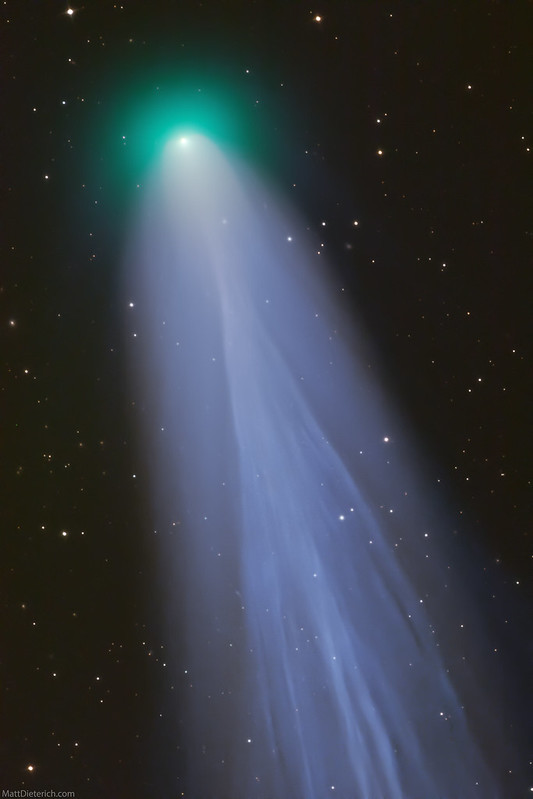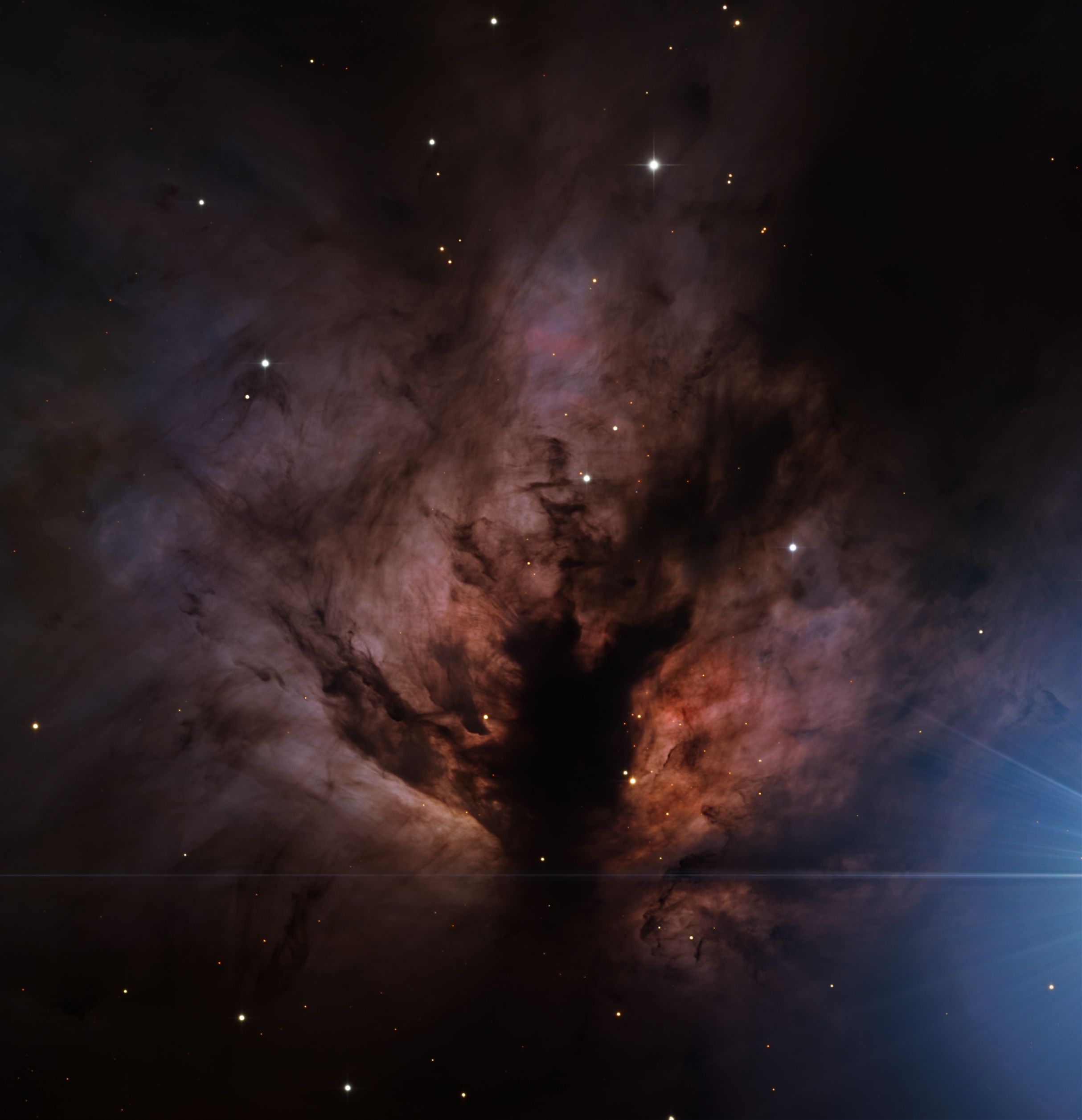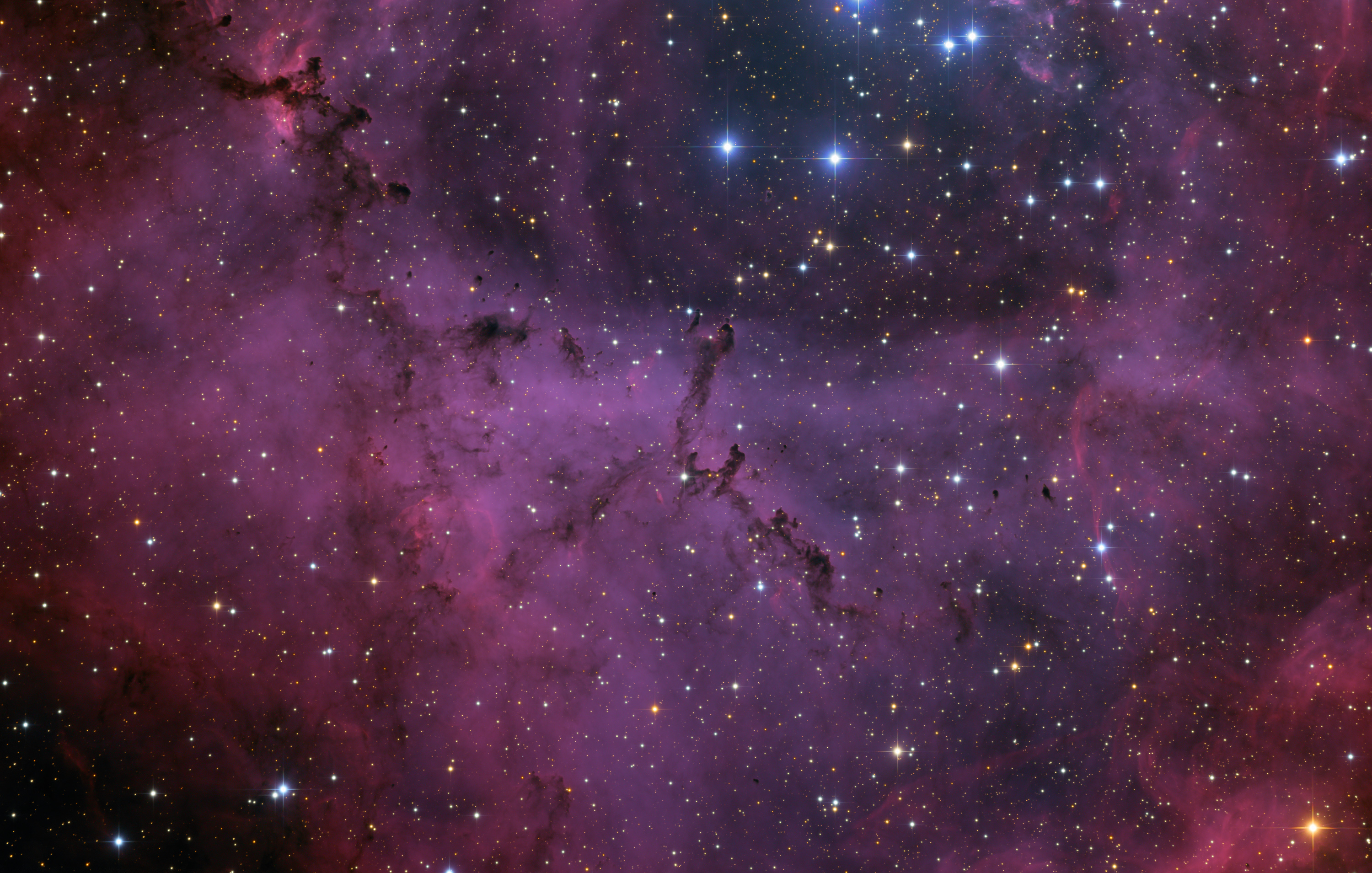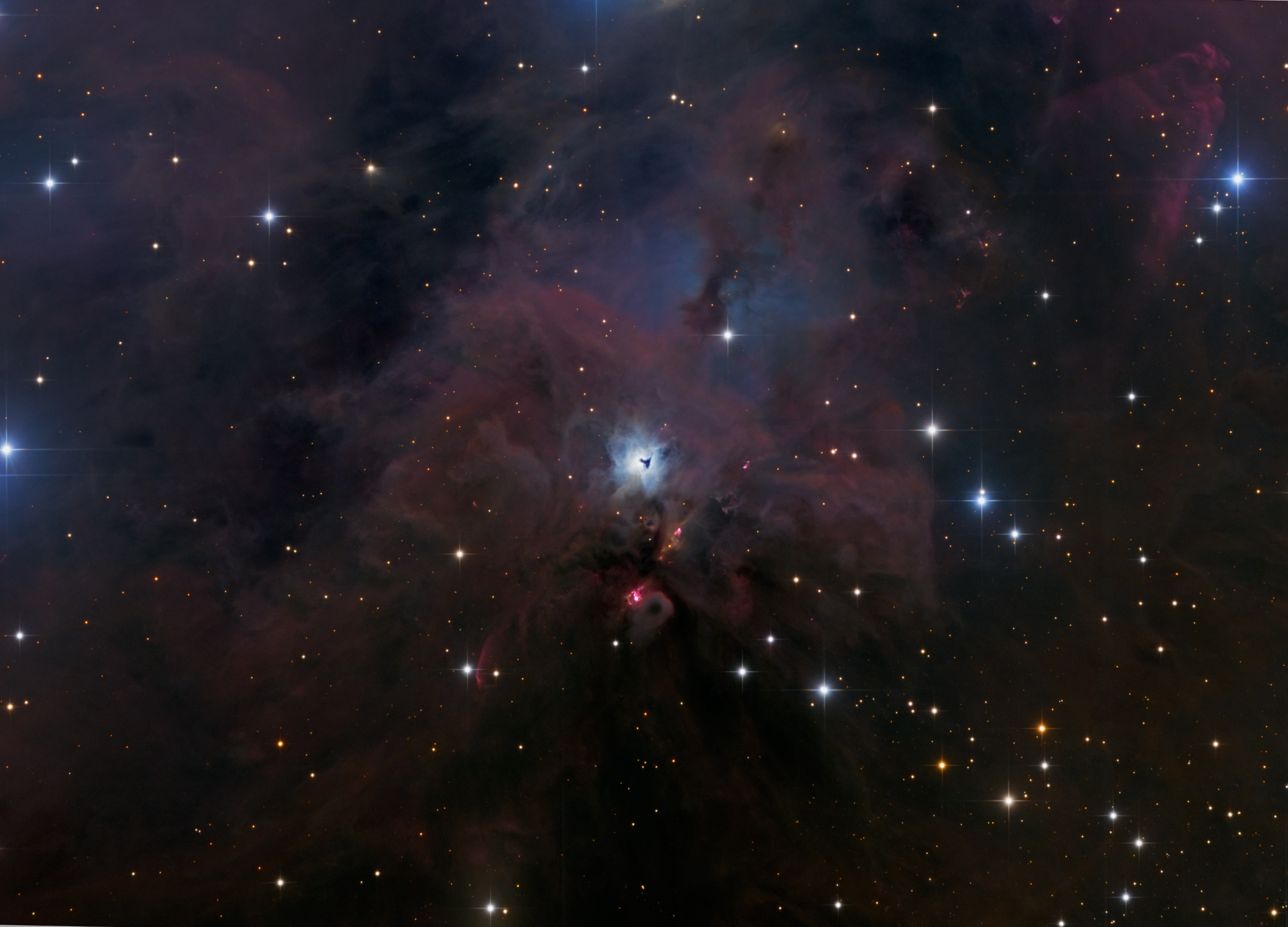Page 1 of 6
Submissions: 2022 January
Posted: Sat Jan 01, 2022 2:41 pm
by bystander
__________________________________________________________________________________________________
Please post your images here.
Please see
this thread before posting images; posting images demonstrates your agreement with
the possible uses for your image.
If hotlinking to an image, please ensure it is under 500K.
Hotlinks to images over 500K slow down the thread too much and will be disabled.
Thank you!
_________________________________________________________________________________________________
<- Previous submissions
Re: Submissions: 2022 January
Posted: Sat Jan 01, 2022 3:34 pm
by Sergio
Year End Sundown
Happy new year!!
Last view of the Sun for 2021
Taken from Punta del Este, Uruguay
Best Regards
Sergio
www.baskies.com.ar
Re: Submissions: 2022 January
Posted: Sat Jan 01, 2022 5:18 pm
by Nicolas Adriano
Comet 4P/Faye Drifting by the Nebulous Starfield in Monoceros
Copyright: Nicolas Adriano
Image URL:
https://cdn.astrobin.com/images/67318/2 ... aa6c8a.png
Telescope: Nikon 200 F/2
Camera: FLI ML16200
Filters: Astrodon LRGB 2GEN
Mount: 10 Micron GM1000HPs
Location: El Sauce Observatory - Río Hurtado, Coquimbo Region, Chile
L: 3x300"
R: 3x300"
G: 3x300"
B: 3x300"
Total Integration Time: 60' or 1 hour.
Email:
nicolasadrianofariasanches@outlook.com
Re: Submissions: 2022 January
Posted: Sat Jan 01, 2022 5:39 pm
by mi7sen
Happy new year!
my submission of the earth to scale and the scale of a solar flare from the 31st of December taken in Kuwait. I found the scale using reference pdf files to measure proms and showsnthebrealtive size of earth in comparison.
equipment : Lunt LS100MT with a 2.5x barlow and an asi 120mm
feel free to use the image as liked.
regards
Abdulmohsen Alreesh
@mi7sen89 on Instagram
Abdulmohsen Alreesh in Astrobin
link to the image
https://i.ibb.co/f2bYv2s/Earth-to-scale.jpg
Re: Submissions: 2022 January
Posted: Sat Jan 01, 2022 6:28 pm
by TheHeavensDeclare
Space & Time - Milky Way in an Hourglass
Date: August 27, 2021
Location: Cape Hatteras, North Carolina, United States
Link to Flickr Full-Size:
https://flic.kr/p/2mUtKct
This is an actual capture of the Milky Way and Cape Hatteras lighthouse in both halves of an hourglass. I emptied the sand from the hourglass and then filled it with water to act as a double-decker fisheye lens. This photo is actually a blend of about 10 different photos which I manually stacked to reduce noise. I had to stack them and process them manually to account for the varying relative levels of movement in the background stars, hourglass stars, and the stationary lighthouse.
Image Specifications:
~10x16sec at 3200 ISO (stopped down to f/2.8)
Equipment Used:
-Canon Rebel t7i DSLR
-Samyang 14mm f/2.8
Re: Submissions: 2022 January
Posted: Sat Jan 01, 2022 6:47 pm
by dheera
Happy new year everyone!
The Cygnus region of the sky including the North America Nebula, Deneb,Sadr, and the Crescent Nebula rising over the Alabama Hills in California.
Shot with a 100mm lens (which gives you an idea of just how HUGE these nebulae are in the sky) and ~2 hours of exposures, mostly with a dual-narrowband H-alpha / O-III filter and then combined with RGB). This is tracked and blended for denoising, but the perspective is unaltered, i.e. it is an accurate representation of what we would see if we had better eyeballs and sensors.

Follow my IG for more landscape astrophotograhpy:
https://instagram.com/dheeranet/
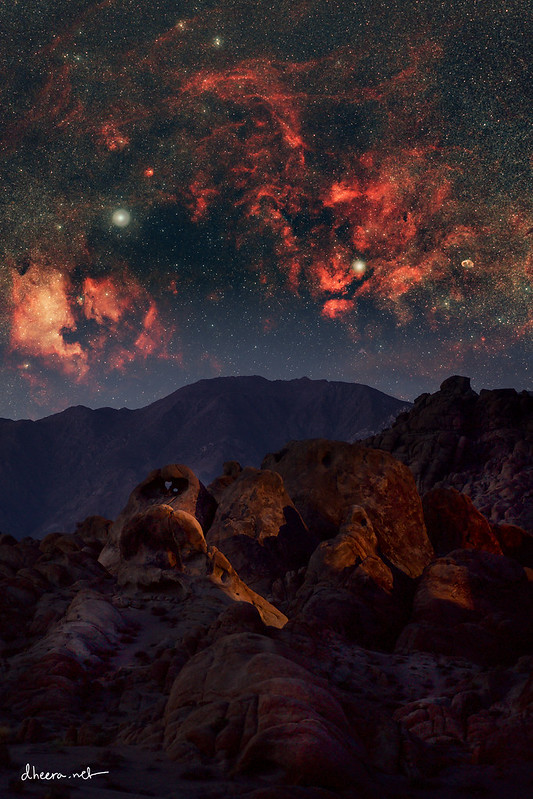 Cygnus rising over the Alabama Hills
Cygnus rising over the Alabama Hills by
Dheera Venkatraman, on Flickr
Re: Submissions: 2022 January
Posted: Sat Jan 01, 2022 6:50 pm
by dheera
Another submission -- Markarian's Chain over Mt. Lassen
There are at least 19 galaxies in this image I can count, and probably many more!
This was shot with a 500mm lens from a very precise location several tens of km from the mountain. I had carefully selected this location where Markarian's Chain would rise directly over the mountain.
As above, this is tracked and blended for denoising but perspective is unaltered.
More landscape astrophotography on my Instagram:
https://instagram.com/dheeranet/
 Markov Chain over Lassen
Markov Chain over Lassen by
Dheera Venkatraman, on Flickr
Re: Submissions: 2022 January
Posted: Sun Jan 02, 2022 7:45 am
by Tom Glenn
A Lunar Day on Clavius
 A Lunar Day on Clavius
A Lunar Day on Clavius by
Tom Glenn, on Flickr
A lunar day on Clavius crater. This sequence is composed of 12 individual images that I captured from my backyard in San Diego, CA over the past 4 years. While Clavius normally appears foreshortened from Earth, these images have been transformed into a stereographic polar projection, yielding a unique overhead perspective. The map projection also aids in aligning images taken on different dates, because the raw images are non-superimposable due to perspective changes from libration.
I also posted an animated version of these frames (plus one additional frame):
https://twitter.com/thomasdglenn/status ... 3405968386
The date and time of capture for the individual images is as follows, from upper left to lower right:
April 21, 2021, 02:49UT
March 26, 2018, 03:16UT
April 14, 2019, 04:14UT
April 25, 2018, 04:28UT
April 15, 2019, 05:48UT
March 29, 2018, 07:24UT
February 8, 2020, 07:12UT
November 27, 2018, 12:26UT
September 30, 2018, 11:47UT
August 3, 2018, 13:08UT
September 21, 2019, 12:28UT
November 27, 2021, 13:45UT
Equipment used:
C9.25 Edge HD telescope
ASI183mm camera
Map projections using WinJUPOS (free) software
Re: Submissions: 2022 January
Posted: Sun Jan 02, 2022 10:51 am
by Meiying Lee
When we observe solar and lunar eclipses, the shape of the sun and moon will change with the magnitude of eclipse. When the magnitude of eclipse is very large, the sun and the moon will become very thin, but the shape is different from the very thin crescent moon. This is because they have different reasons for forming bright and dark regions. The shape when the magnitude of eclipse is close to half is also different from the first quarter moon or the last quarter moon. Of course, when the magnitude of eclipse is small, the shape of the sun and moon is also different from the gibbous moon. If you look closely at the solar eclipse and the lunar eclipse, the geometric shapes of the sun and the moon are also different. The dark area of the solar eclipse is because the sun is blocked by the moon, so the edge is a small arc. The lunar eclipse is because the moon enters the shadow of the earth, so the edge is a larger arc.
Re: Submissions: 2022 January
Posted: Sun Jan 02, 2022 2:50 pm
by Astrodude13
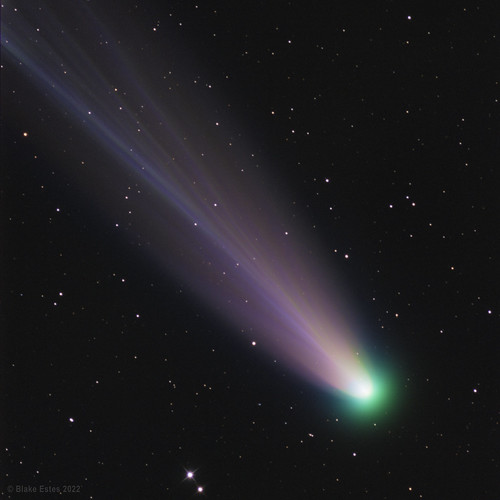 Comet Leonard CDK20
Comet Leonard CDK20 by
Blake Estes, on Flickr
Technical details are as follows:
Taken this evening, 1/2/22
Planewave CDK20 scope
Planewave Ascension A200HR Mount
SBIG STX-16803
Astrodon RGB filters
Total exposure was 18 minutes
3x120 Blue
3x120 Green
3x120 Red
Processed in APP and Photoshop
Re: Submissions: 2022 January
Posted: Sun Jan 02, 2022 9:14 pm
by vanamonde81
The Evening Star
Copyright: György Soponyai
This photo presents the analemma-like celestial path of planet Venus on the Western sky between middle of May and the end of December capturing with a wide-field lens near Mogyoród, Hungary. The pictures were taken at the time when the Sun was located exactly eight degrees below the horizon.
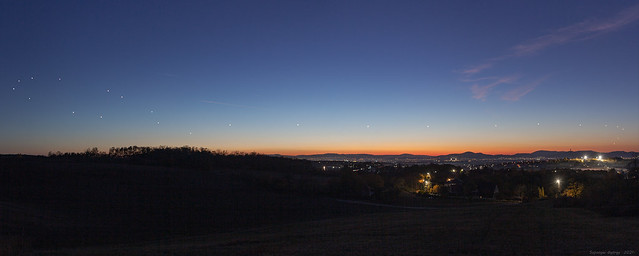 2021.05.14. - 2021.12.31. (foreground: 2021.10.24.)
2021.05.14. - 2021.12.31. (foreground: 2021.10.24.)
Mogyoród, Hungary
Canon EOS 5D Mark II + Samyang EF 24/1.4
Re: Submissions: 2022 January
Posted: Sun Jan 02, 2022 9:50 pm
by asro8042
A Helping Hand in Cassiopeia
Copyright: Jon Talbot
Weblink:
https://www.starscapeimaging.com/Helpin ... 0Hand.html
The attached image shows a marvelous and busy area in the constellation Cassiopeia. It contains a large amount of dust, several dark nebula and several reflection nebula along with two interesting stars. Near the top center is the star SU Cassiopeiae which is a Cepheid variable at Mag 5.94. SU Cass is a Yellow giant with a spectral class of F5:lb-11. It's 19 times larger than our sun. SU Cass lies 1289 light years distant. Surrounding it is the blue reflection nebula VdB 9 which is lit up by SU Cass. The blue wisps extend quite a ways around this area. The other interesting star in the lower center left is the star RZ Cassiopeiae. RZ Cass is a white A3V main sequence star at mag 6.26. It's an eclipsing variable star which is 219 light years distant. The bluish nebulosity surrounding it is listed as VdB 7. However RZ Cass is apparently not the source to light up VdB 7 but another smaller 11th mag star nearby. Several dark nebula are right of center in the image. The upper part of this nebula looks like an opened hand, hence the nickname (The helping hand). The dark area of the hand, near the top finger is designated as LDN 1357 and below it near the palm, LDN 1355. The long dark area near center right is the dark nebula LDN 1358. Throughout this entire area encompassing the field of view is lots of molecular dust of varying thickness and color. Check out the annotated image showing where these objects are. Also check out the full res image to see lots of interesting detail. This image was taken under the dark skies of the Okie Tex Star Party in October 2021. It encompasses 14.3 hrs of exposure time using LRGB filters.
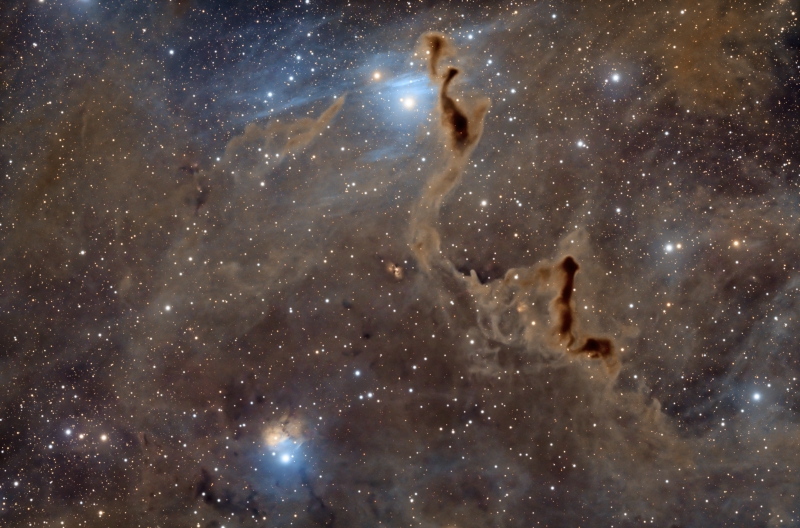
Re: Submissions: 2022 January
Posted: Sun Jan 02, 2022 11:40 pm
by mdieterich
Comet Leonard
www.mattdieterich.com
Copyright: Matt Dieterich
Comet Leonard as seen through a PlaneWave CDK600 telescope at El Sauce Observatory in Chile.
Re: Submissions: 2022 January
Posted: Mon Jan 03, 2022 6:09 pm
by Wolfgang
Re: Submissions: 2022 January
Posted: Mon Jan 03, 2022 6:12 pm
by Wolfgang
Re: Submissions: 2022 January
Posted: Mon Jan 03, 2022 6:14 pm
by Wolfgang
Re: Submissions: 2022 January
Posted: Tue Jan 04, 2022 1:55 pm
by Davide_Manca
Re: Submissions: 2022 January
Posted: Tue Jan 04, 2022 3:31 pm
by Meiying Lee
Crescent Moon and Venus
Today’s crescent moon is illuminated only by 3.8%, and Venus, which is very close to the sun, is illuminated only 1.0%. Both are very thin and crescent-shaped, especially the small crescent of Venus in the long lens is very beautiful. The video is attached with the small crescent sinking. The link is as follows:
https://youtu.be/6VMDVsWNNEg
Re: Submissions: 2022 January
Posted: Tue Jan 04, 2022 7:51 pm
by Davide_Manca
Re: Submissions: 2022 January
Posted: Tue Jan 04, 2022 11:06 pm
by Jean-Baptiste Auroux
IC 1396 SHO - Elephant's trunk & dust clouds in Cepheus
Full version :
https://cdn.astrobin.com/thumbs/VxpZA3w ... 2EQU70.jpg
IC 1396 nebula - SHO version + RGB for stars
Takahashi TSA102 - AZEQ6 - Atik Cameras AtikOne 6.0
Astronomik Ha 6nm: 24x900" (6h) -15C bin 1x1Astronomik Filters (6nm)
Astronomik OIII 6nm: 20x600" (3h 20') -15C bin 2x2
Astronomik SII 6nm: 18x600" (3h) -15C bin 2x2
Astronomik R 1.25": 12x300" (1h) -15C bin 1x1
Astronomik G 1.25": 12x300" (1h) -15C bin 1x1
Astronomik B 1.25": 12x300" (1h) -15C bin 1x1
Total : 15h20
Corsica & Fouras (France) 2018/2021
Processing : Pixinsight & Photoshop
Copyright: Jean-Baptiste Auroux
https://millenniumphoton.com/
https://www.astrobin.com/users/Jean-Baptiste_Paris/
Re: Submissions: 2022 January
Posted: Wed Jan 05, 2022 1:36 am
by Rouzbeh
IC 1805 - widefield
Details:
https://www.astrobin.com/jo19ge/C/
Sharpstar 76EDPH, QHYCCD 268M, Astro-Physics AP1100
Imaging Cameras
Chroma 3nm H⍺: 28x300" (2h 20')
Chroma 3nm OIII: 39x300" (3h 15')
Chroma 3nm Sii: 25x300" (2h 5')
Integration:
7h 40'
Vancouver, Canada
Dec. 31, 2021
Rouz Astro
https://linktr.ee/Rouz_Astro
Re: Submissions: 2022 January
Posted: Wed Jan 05, 2022 4:33 am
by Meiying Lee
Venus and the Moon
The comparison of the apparent diameters of Venus and the Moon was recorded on December 7, 2021. At that time, it took about 46 Venus to be arranged on the diameter of the Moon. Yesterday (January 4) I recorded the latest comparison of the apparent diameter of Venus and the Moon. Venus has almost reached the maximum observable diameter (1'02"). At this time, only about 32 Venus can be arranged on the diameter of the Moon. So through binoculars we can easily see the small but obvious crescent Venus!
The video is attached with the small crescent Venus sinking. The link is as follows:
https://youtu.be/6VMDVsWNNEg
Re: Submissions: 2022 January
Posted: Wed Jan 05, 2022 9:25 am
by Abdulmohsen Alreesh
Sunspot 2924
https://imgur.com/a/PhwOah6
beautifully large and prominent sunspot this morning sunspot 2924, imaged from my roof in Kuwait City at 10 am local time.
imaged using a Lunt LS100MT and asi 120mm on a rainbow rst-135 mount.
2000 frames in which I stacked the top 12%
Thank you,
Abdulmohsen Alreesh
@mi7sen89 on instagram
Re: Submissions: 2022 January
Posted: Wed Jan 05, 2022 1:33 pm
by Davide_Manca
Re: Submissions: 2022 January
Posted: Wed Jan 05, 2022 5:29 pm
by tango33
The "Mask" nebula or CVMP 1
Full resolution and details:
https://pbase.com/tango33/new_images

And the full frame....can you see the other PN?
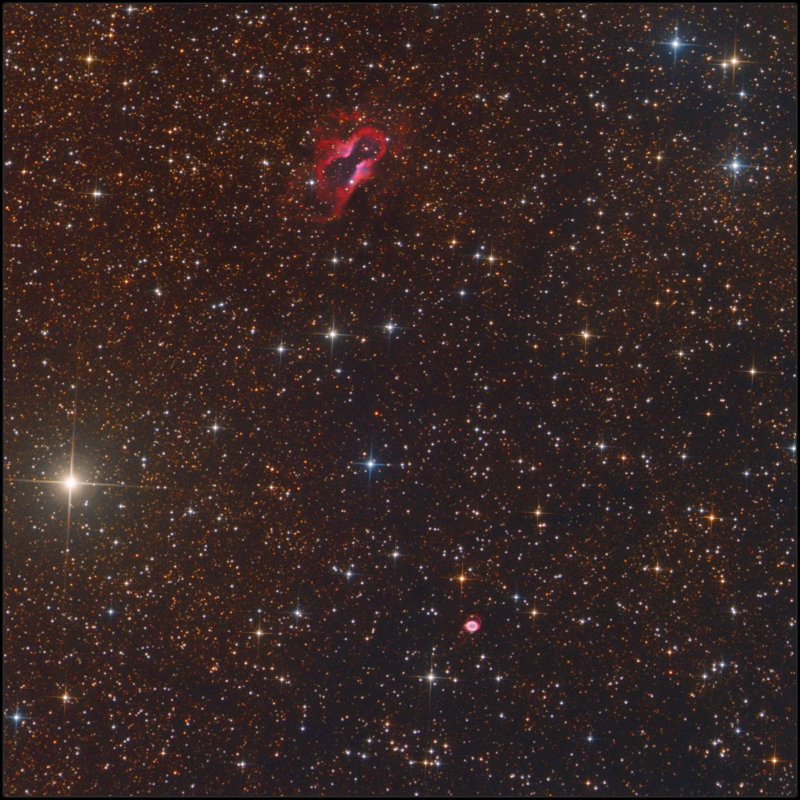
All the best,
Kfir Simon









